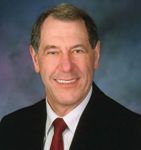North Dakota's pharmacy ownership law faces challenges from chain drugstores and hospitals
North Dakota pharmacists must own at least 51 percent of their pharmacies. This has kept many stores from opening in communities throughout the state. Hospitals and drugstore chains are fighting to change the law.

Key Points
Chain drugstores and hospitals are pushing North Dakota lawmakers to change the rules for pharmacy ownership. Current law requires that pharmacies be owned at least 51 percent by pharmacists. That has largely kept corporate owners, including national chains and hospitals, out of the community pharmacy market.
Critics of the law say it has prevented Wal-Mart and Walgreens from offering $4 generic prescriptions in North Dakota. Supporters say the consumer appeal is a ruse to open the state to national chains, noting that North Dakota Rx prices are among the lowest in the nation.
The state legislature's committee on industry, business, and labor held hearings on a draft bill over the summer. Final language could come to a vote during the 2009 session.

Welder was president of the National Community Pharmacists Association in 2005. Cost isn't the only issue, according to the state hospital association.
"It is a restriction on access to good care," said Chip Thomas, president of the North Dakota Healthcare Association. "Restricting pharmacy ownership to pharmacists just doesn't make sense with the integrated care model that is prevalent in North Dakota."
Thomas noted that his own primary care physician practices in an integrated health system. Inpatient drug orders come directly from the hospital pharmacy, but he must drive several miles to a community pharmacy for outpatient scripts.
"Big-box stores would love to come into the state, but that's not our reason to support change," he said. "For hospitals, it's a matter of patient access."
Supporters of the current law also claim access advantages. They say allowing corporate ownership would decimate independent, mostly rural pharmacies.
"That's the kind of situation you see in neighboring states," Welder said.
"North Dakota has 158 pharmacies, 24 per 100,000 population. In many rural towns, the pharmacist is the only healthcare professional in town. No doctor, no nurse, no dentist, just a pharmacist. Minnesota has 20 stores per 100,000, most of them in urban centers. Having a pharmacy five or ten miles away is a lot more important than a $4 script that you have to drive 50 miles to get to."
North Dakota is the only state that requires pharmacists to own a controlling interest in pharmacies. The law dates from 1967, said North Dakota Pharmacists Association executive director Michael Schwab. Existing chain locations such as Thrifty White and Osco as well as hospital pharmacies were granted exceptions to the ownership requirements.
Pharmacist ownership was originally enacted to ensure professional oversight of pharmacy practice, Welder said. Quebec and Ontario have similar pharmacist ownership requirements, he added, as do Australia and several European nations.
"It's just like you can't own a legal practice unless you're an attorney, an accounting practice unless you're a CPA, or a dental practice unless you're a dentist," he said. "It's all about professionals controlling the practice of their profession. We're seeing national corporations like Wal-Mart and CVS trying to spin the argument to patient access. It's really about whether pharmacists will remain in control of the practice of pharmacy."
Neither Wal-Mart nor CVS responded to requests for interviews. Wal-Mart has a half-dozen stores in North Dakota. NDPhA officials said that one or two stores have leased space to local pharmacies but that most RPhs declined Wal-Mart's contract terms.
CVS has six North Dakota pharmacies, all acquired when the Rhode Island-based chain purchased Osco Drugs in 2006. Walgreens has a store in Fargo, but no pharmacy. "We would very much like to operate a pharmacy in that location and possibly open others," said Walgreens spokesman Michael Polzin. "We are supportive of moves to change the state pharmacy ownership laws."
The Walgreens location opened in the 1970s, Polzin said. It was one of many nonpharmacy stores in malls and other locations with low Rx-demand.
How PBMs Impede Pharmacists’ Ability to Perform Clinical Services | APhA 2025
March 31st 2025Antonio Ciaccia, President of 3 Axis Advisors, led a discussion on pharmacy benefit manager reform and how the inability to pass legislation has led to increased financial hardships in community pharmacy.













